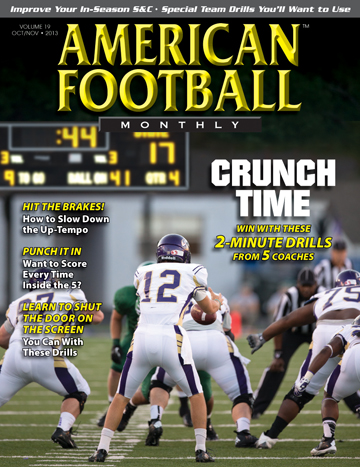Article CategoriesAFM Magazine
|
Safety First: Is your Weight Room a Safe Room?by: AFM Editorial Staff© More from this issue Don’t overlook the importance of having a comprehensive safety program in your strength and conditioning facility. Stafon Johnson had two successful seasons as a running back for USC in 2007 and 2008 and was primed for a big senior year in 2009 and possibly a shot at the NFL. That all changed on September 8th when the 275-pound barbell he was bench pressing fell on his neck, crushing his larynx and severing his vocal chords. Lucky to survive, he recovered and had a shot with two NFL teams but never played a down. Johnson’s accident was rare but not unheard of. The number of hours your athletes spend in the weight room, not just during the season but year-round, far exceeds the amount of time they spend in practice and in games. Yet, from a safety standpoint, the weight room receives far less attention than the playing field despite multiple hazards and a high potential for accidents. The main causes of accidents in weight training facilities are poor facility maintenance, defective equipment, and inadequate instruction or supervision. These are all areas where, according to Scott Caulfield of the National Strength and Conditioning Association, coaches can make a difference. Caulfield is the Head Strength and Conditioning Coach and Performance Center Manager at the NSCA’s headquarters in Colorado Springs. His primary goal is to help coaches across the country become better weight room instructors and managers. “Our goal is to provide as much education as we can to as many coaches as we can,” he said. “We know that in many situations on the high school level, an assistant coach is named the strength and conditioning coach, although he may not have any formal strength and conditioning training. So, we want to educate him and continue to educate him.” The NSCA offers many resources to coaches through their web site – www.nsca.com – including detailed documents that cover topics such as facility safety, risk management, liability, professional standards/guidelines and emergency policies and procedures. To summarize important weight room safety considerations, Caulfield shared the following information: Ideally, all exercise devices, equipment and free weights should be assembled, set-up and placed in areas in full accordance with the manufacturer’s instructions. There should be appropriate signage, instruction placards and warnings posted. All equipment should then be thoroughly inspected and tested by a strength and conditioning professional. Equipment should be maintained properly while equipment in need of repair should be removed from the weight room and taken out of use until repaired. Floor surface, lighting, room temperature and the proper air system are all critical factors for strength and conditioning facilities. All equipment should be cleaned or disinfected regularly as deemed necessary by staff. Users should be encouraged to wipe down skin-contact surfaces after each use. Proper technique is critical to both improving performance and limiting injury. “The proper technique must be taught correctly so each athlete can both maximize his performance and avoid injury,” said Caulfield. The same is true with spotting. “For spotting, we insist that there is someone paired with each lifter. We also give instruction in the proper techniques of spotting. A good example is understanding the proper techniques for spotting a squat.” It is also important to have an organized plan for each weight training practice. Each athlete should have a work card that contains his complete workout for the day. If there is an unusually high number of participants at a scheduled practice, the strength and conditioning coach in charge should work out a schedule so that all participants maximize their time in the facility. |
|
| HOME |
MAGAZINE |
SUBSCRIBE | ONLINE COLUMNISTS | COACHING VIDEOS |
Copyright 2025, AmericanFootballMonthly.com
All Rights Reserved




